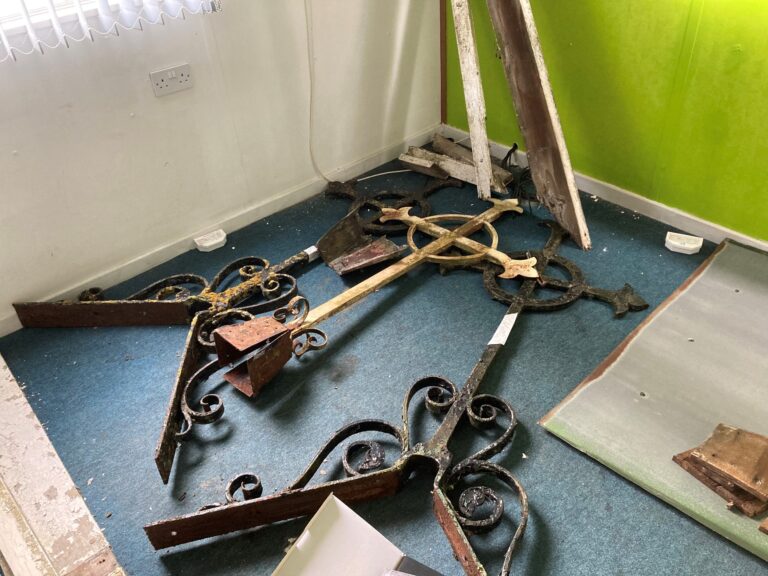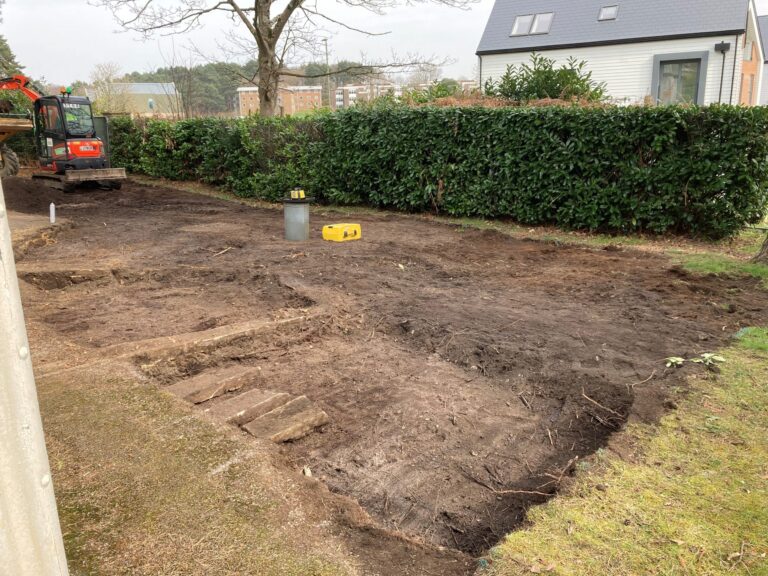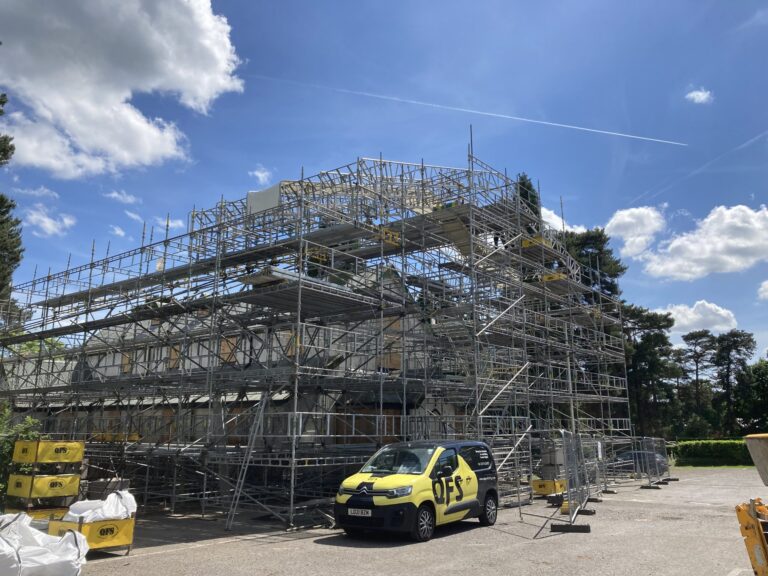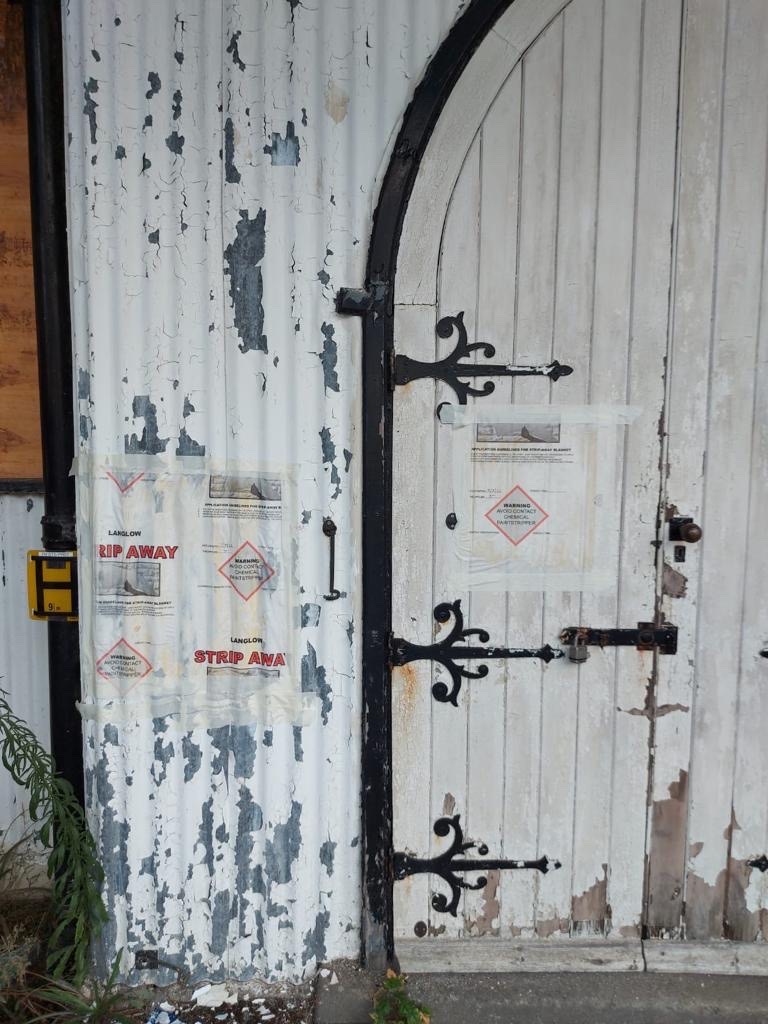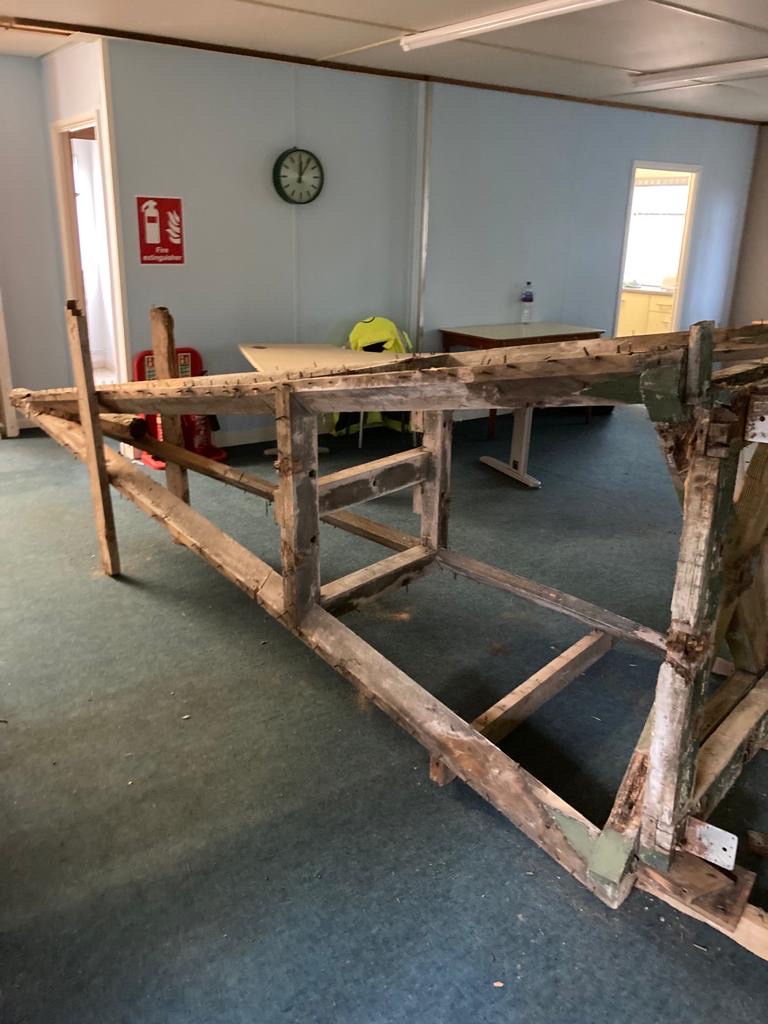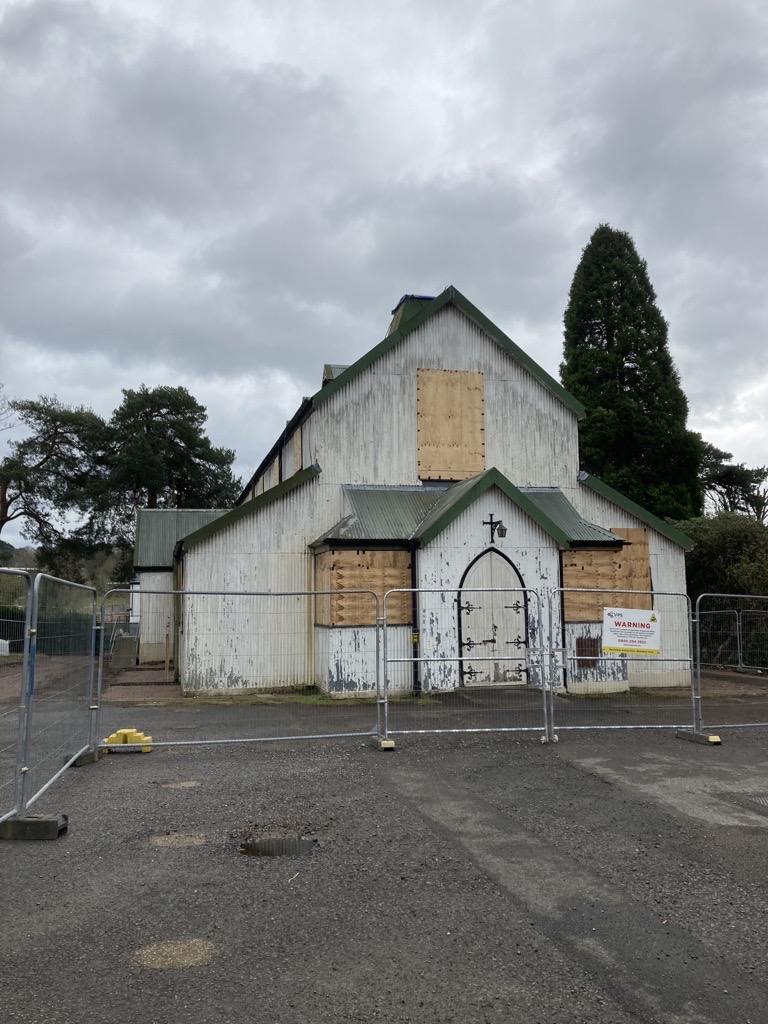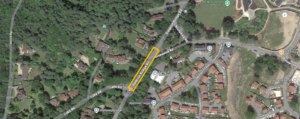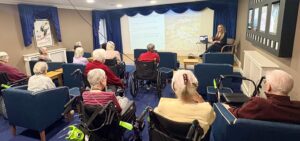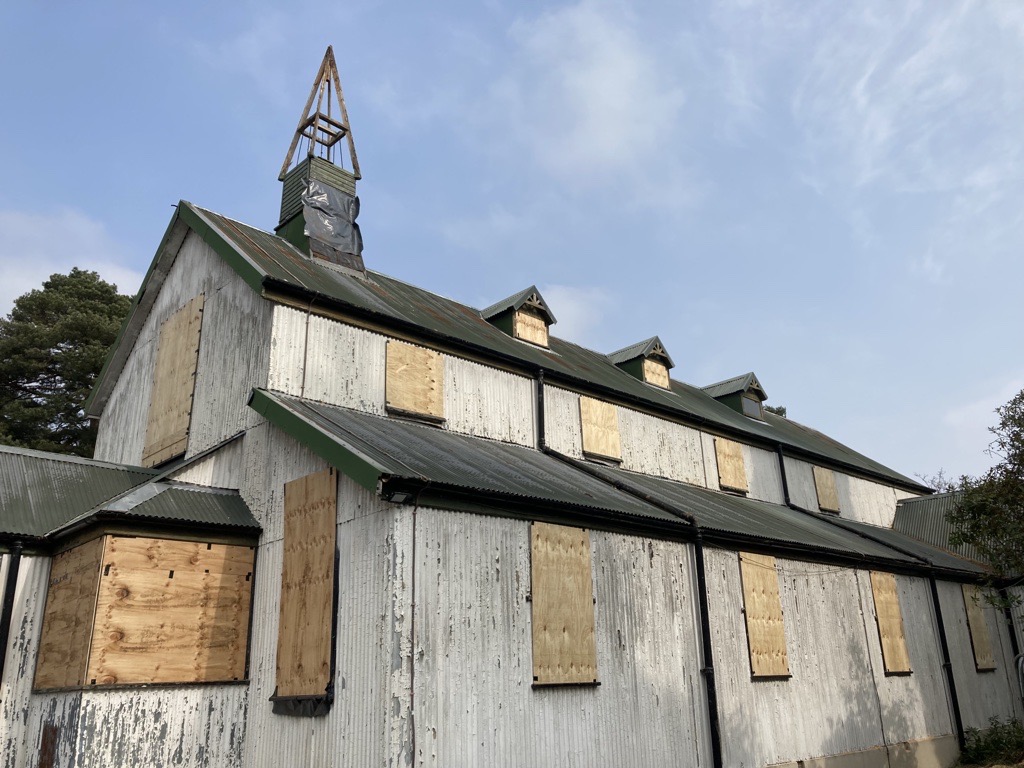
An Introduction to the St Barbara's Church Renovation
This series is all about our work to renovate and restore St Barbara’s church, a Grade II listed church constructed in 1901 which sits on the Mindenhurst development site. It is a ‘tin tabernacle’ church meaning it is an iron structure that would have been assembled off site and exported to Deepcut. Tin Tabernacle churches were developed in the mid-19th century and were typically formed of a corrugated iron structure – the first mass-produced external building material – and timber frame. Only 86 tin tabernacle churches remain and fewer than 20 are listed – St Barbara’s Church is one of them.
The ‘portable Garrison’ church was erected in Deepcut in 1901, shortly after the permanent military camps at Blackdown and Deepcut were established, and it is important that we recognise the history of the Mindenhurst site.
The church was originally called St Michael & All Angels, it was dedicated to St Barbara’s in 1967 in honour of the Patron Saint of the Royal Army Ordnance Corps following the closure of Hilsea Barracks in Portsmouth. Much of the property of St. Barbara’s in Hilsea was installed in the church – most of which remain in the Church today. It was designated a listed building in 1984.
We have to take extra care – and work alongside Surrey Heath Borough Council and the Ministry of Defence – over any changes we make to ensure we restore the building to its former self and secure it for future generations.
Before we started any work on the church, we boarded up the stained-glass windows to protect them from damage and removed the church spire, ready for scaffolding to be installed. The scaffolding was needed so the team could carry out external works to the building – ensuring the building is safe and secure in all weathers and allowing the team access to redecorate the exterior walls.
We’ll be sharing a little more about the renovation work in this blog over the coming weeks so check back soon!
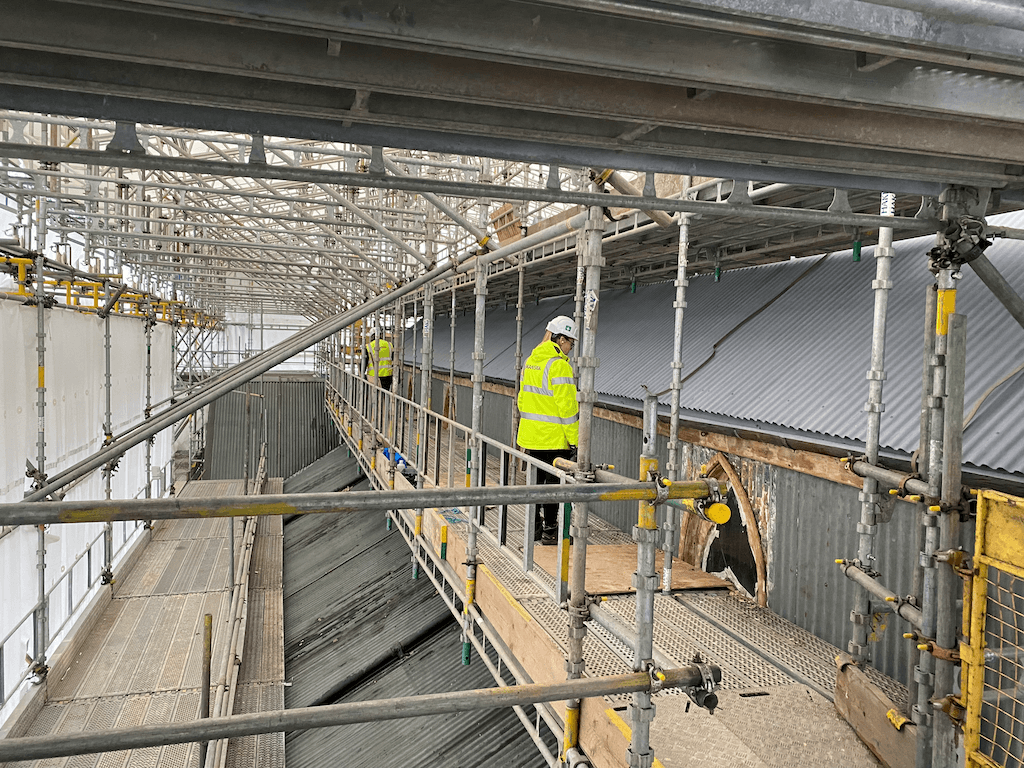
Protecting the church structure
An important part of the renovation process is ensuring we protect the church structure and original features as much as we can. We also have to protect the environment and ecology when we carry out any construction work across the development.
Before work could begin on the church renovation, we engaged Surrey Wildlife Trust to remove the bat features from the Church, we then installed bat mitigation measures throughout the Formal Park to provide alternative habitats for any bats using the Church. Construction could begin once the bats had moved out of the church.
We needed to carry out excavation works to install a foundation for the scaffolding – this is called a scaffold mat and it stops the scaffolding from shifting or sinking. As St Barbara’s is a Grade II listed building, we had to make sure the scaffolding did not rest on the building and potentially damage the external structure or brickwork. The scaffolding therefore needed to be extensive to protect the church and enable us to carry out the works we needed to deliver.
To keep the church dry, we fully covered the scaffolding with a plastic sheet, we then began patch testing the paint to check the durability and colour. As the church is a Grade II listed building, we have to consult the Conservation Officer at every step of the way – before the work is carried out. The patch testing is one example of the steps we take to get approval from the Conservation Officer.
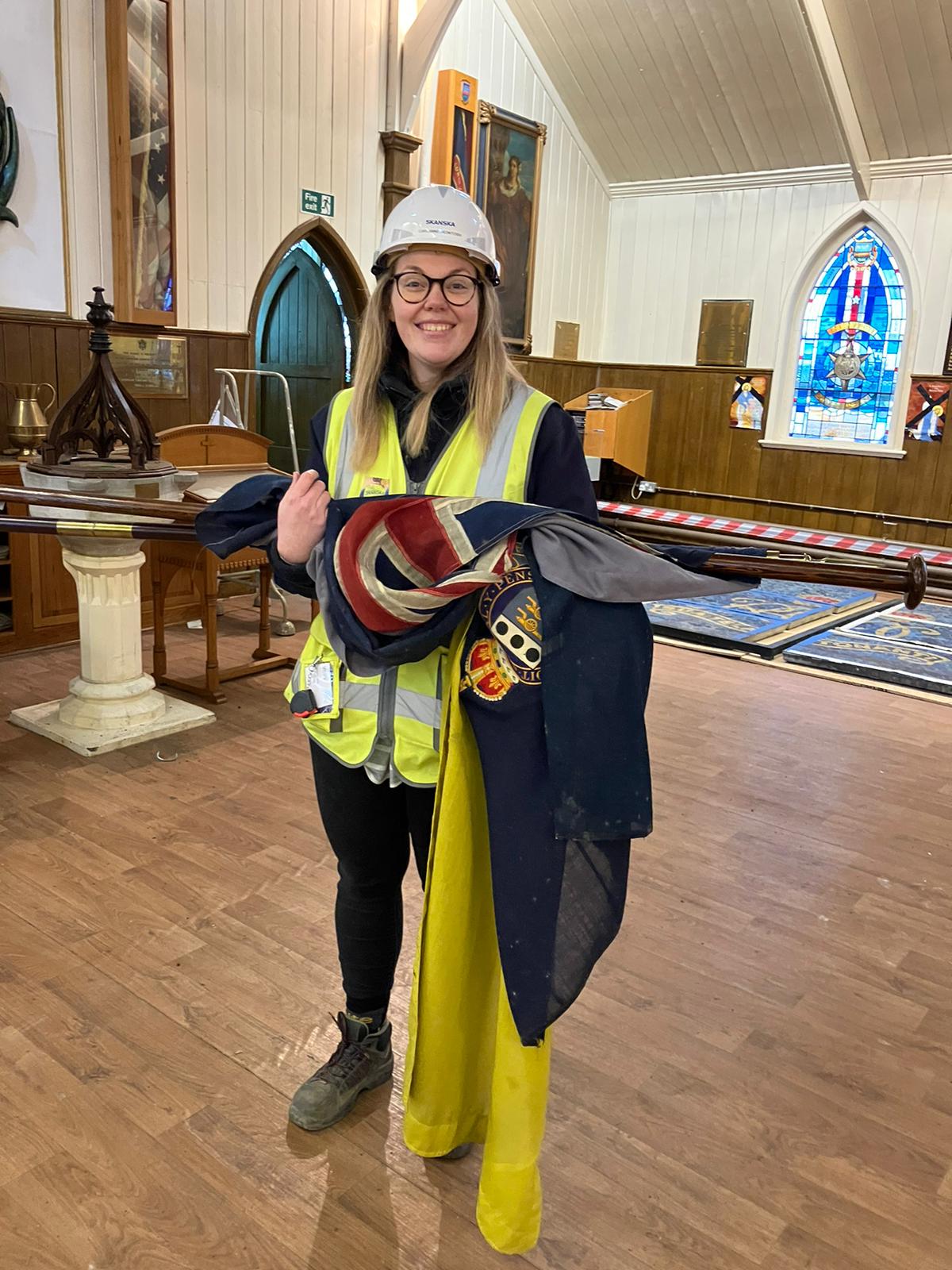
Internal refurbishments
Our Senior Construction Manager, Carianne McIntosh, has been overseeing the internal and external refurbishment works at St Barbara’s Church, including the construction of a brand-new church hall.
St Barbara’s Church is a listed building, so we’ve got to be really careful and respect the history of the building both inside and out. During the renovation process, the Ministry of Defence has been removing flags and regimental memorabilia for archiving and display in Worthy Down museum. Religious artifacts have also been removed whilst renovation works take place, however they will be reinstated at the church once work is complete.
To prepare for the internal refurbishment of the church, Carianne has been helping the Ministry of Defence carefully remove the army memorabilia and flags. Carianne has prepared a plan which makes sure works are of a good quality so that maintenance costs are minimised, and we create a space which is suitable and safe for the community to use in the future.
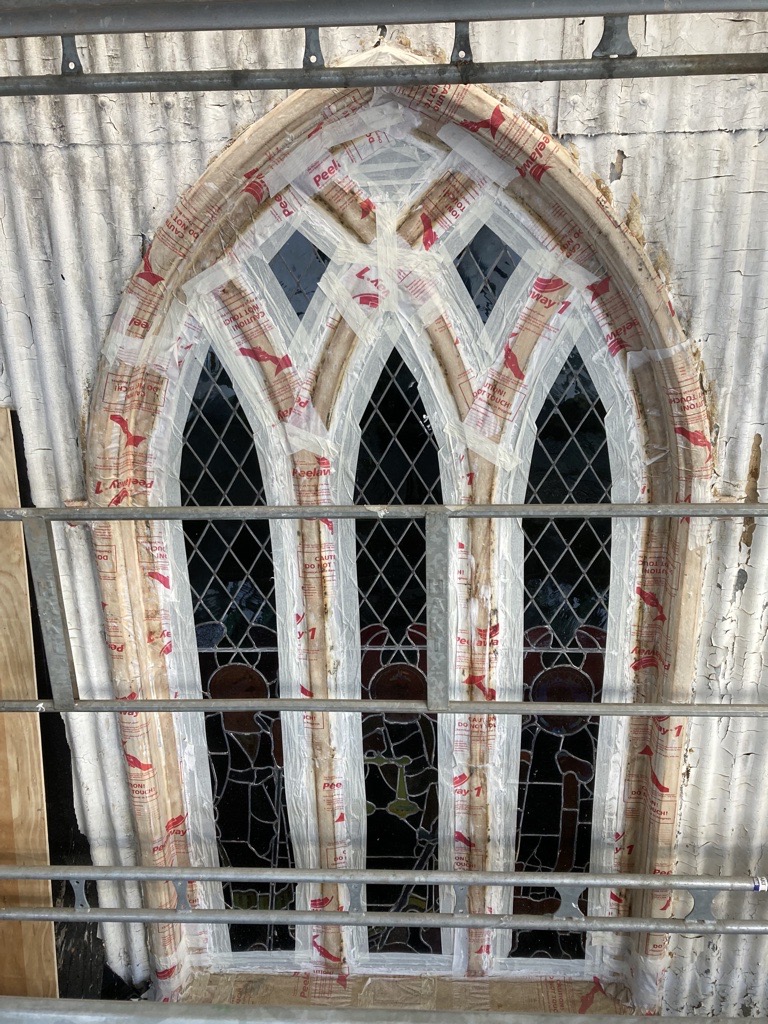
Putting the finishing touches on the Church exterior
We stripped the paint from the wooden frames around the stained-glass windows so we could repair the existing woodwork, and where needed we installed new frames. To remove the paint on the external walls, we used the TORC cleaning method. This means cleaning the exterior of the building without using chemicals, to ensure all old and decaying paint was removed from the structure without impacting the building.
To ensure we did not pollute the surrounding land with old paint chippings, we built an embankment around the church before we began the TORC cleaning, this allowed us to carefully collect and remove any waste. We then replaced the old paint with a fresh coating, ensuring the external church walls are protected.
Removing the paint revealed the corrugated iron which is attached to the external church walls. We applied paste and used paint removal blankets to the timber, to ensure we were taking the necessary safety precautions in case of any lead content in the old paint. The old paint sticks to the blankets, which prevents paint chippings falling and contaminating the ground and surrounding land. Once all the paint was removed, we repaired the existing woodwork and installed new frames where needed.
We also refurbished the church roof before removing the scaffolding. To ensure the paint fused to the roof and to prevent any rusting, we replaced all old and damaged fixings, any rust and then applied a layer of primer paint to the roof before spraying on the top coat. We also found a leak in the roof above the organ, so this was repaired before the topcoat was finished.
Finally, we began to carefully remove the scaffolding to unveil the restored church exterior once the roof was completed.




